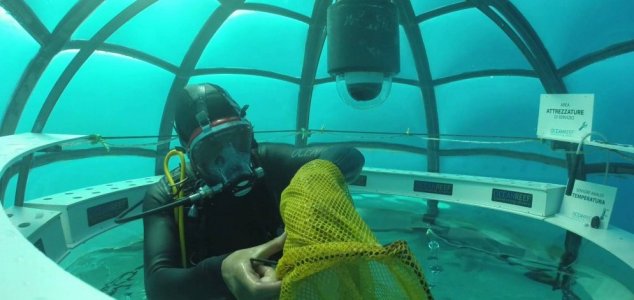
The plants appear to thrive in their underwater biospheres.
Designed to enable crops to be grown in regions where traditional farming methods are impractical, the appropriately named “Nemo’s Garden Project” has been running now for three years.
The plants are grown inside special self-contained biospheres which are anchored to the sea floor approximately 30ft underwater. Despite the unusual location the crops still receive a significant amount of sunlight from the surface and the temperature is maintained at a respectable 25C.
As the sea water evaporates it condenses on the inside of the biospheres which produces a humid environment for the crops to grow. Overall the setup is low cost and remarkably sustainable.
So far the researchers have succeeded in growing several bunches of basil using the technique that have turned out to be almost identical to basil grown using traditional farming methods on land.
A video explaining the project in a little more detail can be viewed below.
Imagine sailing out to sea to tend to your garden underwater. Or envision a world where large scale farming could be moved into the depths of the ocean.
In a project dubbed Nemo’s Garden, a team of engineers at Ocean Reef Group, a family-run scuba diving business, are currently experimenting with such ideas. They’re trialling an alternative agricultural method which involves growing terrestrial crops in the sea. Now in their third year running, they think their underwater “biospheres”—soft plastic bubbles filled with air—could eventually provide the key to sustainably cultivating crops.
“My dad (Sergio Gamberini, president of the company) has a passion for gardening, and he thought that the sea—this enormous dispenser of thermal energy—would always give constant temperature, especially during the summers,” Luca Gamberini, marketing manager of Nemo’s Garden, told me.
“Sea temperature doesn’t drop, whereas air temperature is a lot less stable as air molecules exchange heat very easily. We’re studying how to harness thermal energy to benefit the growth of our plants.”
While the sea is warmed up slowly by the Sun, it also loses heat less quickly, allowing temperatures to remain constant throughout the year.














